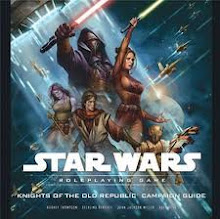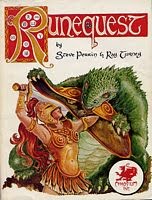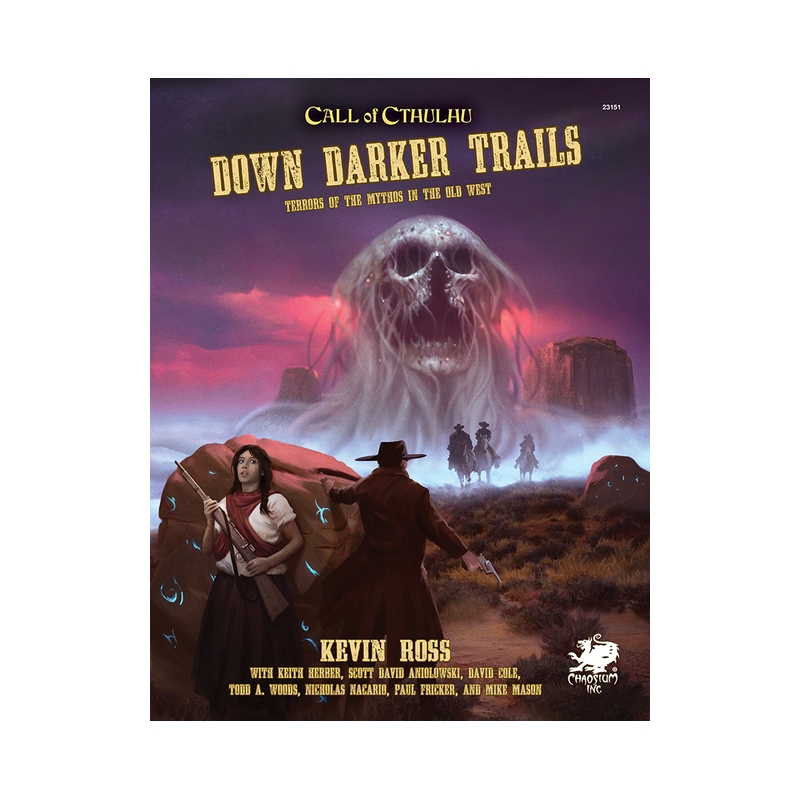Here is a countdown of the top ten most insane AD&D rules. It’s from a site called Topless Robot (one of around a thousand geek sites with the word “robot” in the name). Each item is followed by my own (hold the applause) witty and informative comment on it.
Because it’s a little lengthy (3 or 4 pages or so) post, I’ll do the first five today, then post the other five in a couple of days.
10) Treasure Type
This system of treasure placement suggests that every Gargoyle has 2-8 pieces of gold on them at all times, or that Shambling Mounds always have on their person an assortment of coin, a few gems, a couple of scrolls, and maybe a potion or miscellaneous magic item (not to mention that carrot they have for a nose, just in case you're feeling snacky). Once players realized that this system was more or less a guarantee of at least a chance for a specific item type to drop, it becomes incentive to hunt them down. Who cares if nymphs are neutral good? She's Treasure Type Q and X, man!
My take: I hardly ever used the random treasure type stuff; although at some point in Jr. High I was using some tables from the monster and treasure assortment. Ultimately, it was more fun for me to just decide for myself what the creature had on its person or in its lair. Sure, I keep the Old School Encounter Ref in my game bag for emergencies these days for when characters wander off the beaten (and plotted)path, but that isn’t really based on monster type anyway. Yeah, we don’t need no steeking treasure type lists for monsters.
9) Level Titles
Okay, so these are pretty damn cool, and remain a fond memory for most players familiar with the 1st Edition rules. But if you think about it, they're also pretty nuts -- why is a 1st level fighter a veteran, if they're first level? They're even sort of insulting, in some cases. Take the Cleric titles: at sixth level, you're a Catholic Canon; at seventh, you embrace Buddhism as a Lama; and at eighth, you're a Patriarch out of the Greek Orthodox tradition. All this from a cleric who worships Odin. Seriously, this is just asking for religious boycotts. And while we're talking about it, was there anyone who played a kick-ass Monk who wanted to go by the title "Grand Master of Flowers"?
My take: this is a very good point, and flavor or no I don’t really use them. Let’s for sure hold off on calling Mr. 1st level fighter a “veteran” until he has killed his first orc and kissed his first girl (put a female orc in there and you got yourself a two-in-one).
8) Magic-Users
The name alone warrants inclusion on this list. Later editions fixed this -- "mages" in 2nd Edition, "wizards" in 3rd. But really, anything was better than what they fixed upon for the 1st Edition. It becomes status quo for most players, but think about it--by this nomenclature, fighters (which had at least by this point graduated from the gender-exclusive and similarly lame class title of "fighting men") should have been called "sword-users" and thieves would have been called "lockpick-users." (I'm excluding clerics from this example, since they would have been called "healing-users with a blunt weapon of only marginal combat value"--which they already sort of were.) But the real beef about Magic-Users in 1st Edition was that in terms of magical combat, they were one-shot and done. One magic missile or sleep spell, and they were done for the remainder. Mages make up for this by being insanely powerful on the other end -- when fighters are doing only slightly more damage per hit than they were doing at first level, mages can lay waste to an attacking platoon in a single round. But getting past that early going when a decent wand is more useful than you? That's a tough row to hoe there, Gandalf.
My take: Bah, I don’t really care. I tend to use the term MU or Magic-User because I like to reserve terms like mage or wizard for a character that has advanced somewhat (but not necessarily a name level). In in may game world, I assume people refer to them as magic-users (even though there are other types of spellcasters). As far as MU’s being a little light in the pocket spellwise at low levels, well, them’s the breaks. In the last couple decades I gave new MU’s a couple of random spells “in mind” that they can cast once a day, but for my next campaign I’m just thinking of giving them access to cantrips again, and making those cantrips free and castable anytime, with perhaps a 3-5 a day limit.
7) Arbitrary Limits as to Gender, Race, and Class
Admittedly, this is a broad category. But the problem here is well represented in the early pages of the first edition Players Handbook, in which in his preface on page 6, Gary Gygax mentions that readers will find "no baseless limits arbitrarily placed on female strength"...and then two pages later, the rules specifically state that human female fighters are limited to no more than an 18/50 strength. (It can, of course, be argued that this can still be seen as consistent, and that Gygax meant that those limits -- which are even more stringent, by the way, if your character is demi-human and not a fighter -- are neither arbitrary nor baseless...but that only exacerbates the problem.) But seeing as how that score is (supposedly) rare, there are better examples: how about a cleric of Poseidon who can't wield a trident? A dwarven fighter who can't rise higher than 9th level? (And too bad for you if you wanted to be a half-elf cleric, because you couldn't go higher than 4th level.) Why? Some of it is game mechanics -- unlimited levels were one of the few perks that existed insofar as being a human was concerned, back then -- and the game designers didn't want magic-users and clerics using swords, so they just forbade it (and even though 3rd Edition and onwards has corrected this issue to some degree, it still lingers in legacy games like World of Warcraft.) But other things -- like gender differentials for ability scores and the like? That's not a game balance thing; that's just alienating half your potential audience. To be fair, later editions of the game went too far the other way, and relied almost exclusively on the feminine pronouns -- so the game switched from exclusionary to pandering. Great work.
My take: Heh, I remember some gaming material in the 80’s going with the “she” or “her” instead of the usual male reference. Political correctness at its finest. I also remember fondly articles in The Dragon and The Dungeoneer in the early 80’s aimed at female players (with titles like “Those Lovely Ladies”) that seemed to think women in gaming were getting the short shrift. I had a superhot girlfriend who played in my games when I was in high school (she was already a fan of Sci Fi and fantasy so this hot chick playing D&D was not that weird), and all my jealous gamer friends would have their characters kiss her charcter’s asses in attempts to at least get favor from her PC’s in a way they could only dream of in real life. This was in stark contrast to when I took her around my football teammates, where my friends would try to kick my ass to impress her. Best of both worlds. Jeez, I took this comment in a weird direction. Ah, memories.
6) Bards
Holy crap, why was it so hard to be a bard in first edition? Any idiot can pick up a lute and start strumming it in a tavern -- so why in the world would they need to be at least a fifth level fighter, a 5th level thief, and a first level druid before becoming a first level Rhymer? Especially in a game that didn't seem to have been designed to support characters going much higher than 14th level or so? (No modules were created early on for levels above that with the exception of Isle of the Ape in 1985, and even though the spellcaster tables go up to 29th level, once most classes hit name level---10th, they stopped accumulating even full hit dice, let alone new powers or abilities.) Bards were effectively the first prestige class in a game system that didn't yet support them. Bards--along with psionics and several items above--are a good example of why the stuff in the Appendices were relegated to the appendices in the first place.
My take: D&D bard was indeed some stupid shit, at least in my games. In the 80’s onward you were lucky if I ran a campaign long enough to get your character to 7th level, so a regular bard would be out. At some point I created a bard subclass of thief that gained skill (in music, performance, and art in addition to some thief skills) as they went up. Due to Andy’s early (and fairly mild) power gaming with this kind of bard at the start of this current campaign, I have altered my bard heavily since he rolled up his character Vaidno (much to his chagrin). I love the Vaidno character nowadays, but my bard class will be a different animal if anyone runs one in the future (although in Andy’s defense, I gave my bard a D4 for hit points, which makes up for almost every other problem with my bard class).
Thursday, December 2, 2010
Top Ten craziest AD&D rules (part 1)
Labels:
bard,
dragon magazine,
drow,
dungeoneer,
dungeons and dragons,
fluff/inspiration,
magic users,
rpg,
rpg hub,
top ten list,
treasure
Subscribe to:
Post Comments (Atom)



















Just a few thoughts...
ReplyDelete10) I love random treasure tables. I just don't want to be bothered with placing treasure. It's the least favorite part of my game to guess what my players want. I just want to throw money and items at them, and let them shape their own destiny. I love treasure tables for that reason. It's actually my largest complaint is that WOTC broke them when they tried to make them for 3E and beyond.
6) Becoming a bard is not that bad if you have the stats for the bard. Before your Fighter hit's it's 6th level, you can have your bard. Assuming you can pay for the training as you go, which is the real obstacle. Even before the fighter hits 6th, your bard is ready to go, and will be almost caught up by the time you start hitting 7th.
It is difficult to qualify for the bard CLASS because it requires so much study and learning in so many areas. Any fool can pick up a lute and start strumming...a bard is something altogether different.
ReplyDeleteRE: Magic-users.
If you think of classes as classifications, this fits fine and dandy. Fighters fight, magic-users use magic. Whether the fighter looks like a knight or a mongol or a Roman gladiator is up to you. Similarly a user of magic could be a pointy-hat wizard, a shaman, a witch...whatever. Oh, yeah...and thieves steal...that's why they're called "thieves" (forget all that "rogue" bullshit).
To me, clerics are the odd duck of the mix.
Ah, but for the bard, you guys don't give new HP for most of those Thief levels right?
ReplyDeleteExample A:
Fighter 5th
Thief 6th
Bard 8th (bard gets no HP at Bard 1)
Does he have 5d10 plus 6d6 plus 7d6?
Or does he have 5d10 plus 1d6 plus 2d6?
I mention it because, as someone pointed out, Bards snap right up through those Thief levels almost immediately. If you give them full HP progression they are ridiculous powerhouses.
Then again, there is some sense in treating Bards like dual-class characters, in that you don't get new HP rolls until you exceed your old level ...